Add your feed to SetSticker.com! Promote your sites and attract more customers. It costs only 100 EUROS per YEAR.
Pleasant surprises on every page! Discover new articles, displayed randomly throughout the site. Interesting content, always a click away
Doglogic
Dog Training Tips and TricksTeaching A Puppy The Fundamentals Of Obedience 26 May 2022, 6:11 pm
By: Lyn Richards Pawlowski
Obedience training starts in the whelping box. You have to depend upon the breeder from which you purchase your puppy to provide these basics. If you are well acquainted with the breeder, you are more likely to be able to positively affect the early training of your puppy. You will also be better able to make an educated choice of puppy, based on your knowledge of each individual pup in that litter. Since this particular article was written for a Great Dane publication, I will be referring to some specifics that may apply to the breed, but really, puppies are just puppies.
Up to three weeks (21 days) of age, studies have shown that puppies are able to absorb very little in the way of education, they are unaware of much except mom, food and sleep. Elimination is done by reflex at this point. This changes between 21 and 28 days of life. Puppies begin to leave the blankets and look for a corner in which to eliminate. They become acutely aware of their environment, and are extremely sensitive to stimuli. In fact, any experiences at this stage, (to the negative or positive) will more profoundly affect the puppy than at any other point in its life. This is where you and the breeder can help shape your puppy’s mind and life.
Crate training and minor obedience training can actually begin at this age. A large wire crate (big enough to hold all the puppies) padded with blankets is introduced to the whelping box. Papers are layered on the floor around the crate (as they were around the blankets at the beginning). As the puppies explore and roam, they will choose to sleep in the crate, and eliminate on the paper.
Puppies can be handled and stacked at four weeks, and it is great for them to be socialized and handled starting at this point. When stacking, remove a puppy from the litter. Place the pup in position, hold in position gently for just a couple of seconds using the “stay” command quietly. Praise softly and release. Make it a fun, play kind of thing. Calling the puppies as a group, clapping the hands and using a happy voice, is an introduction to the “come” command. This is effective as a pre-training method if the puppies can be induced to come to the caller by a second party urging them forward gently, and if lots of praise is used. They can learn lots of basic skills at 4-6 weeks, which will save the owner and handler (and also the pup) the headaches and frustration that may occur, if taught at a later age.
Some breeds are by nature a more laid back personality type, and are stubborn as well as gentle and sensitive. This must be considered when training any puppy. While there are exceptions, the norm prevails and common sense will serve to guide you. Bear in mind that some breeds grow quickly, some more slowly, so it is vital that the puppy respect the authority of the trainer/owner early on, as well as admire and love him/her. This means that praise and consistency are vital ingredients in the training recipe. The following guidelines will help foster admiration, respect and love in your new obedience pup once you bring him home.
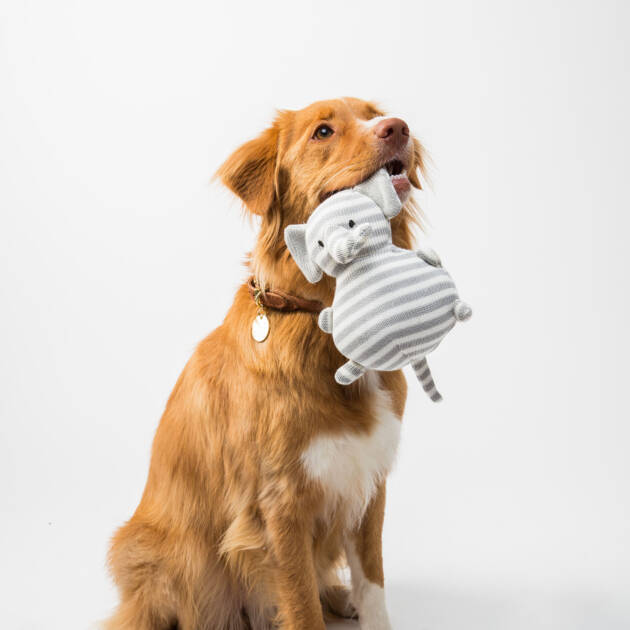
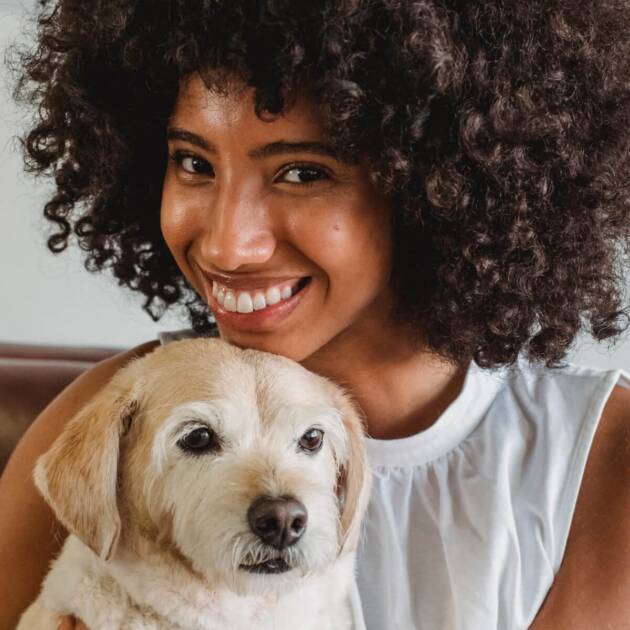
Basic Guidelines
Do Not Use Punishment:
Punishment as a training aid does not foster willingness to please and excitement for work, which come with positive re-enforcement and treats. Any negative stimuli should be limited to using the word “no” or “uh – uh” and blocking (using the hands/lead) the puppy’s incorrect actions. Hitting and physical abuse of any sort are NEVER used on any dog or pup, and should not be used unless under the most extenuating circumstances in an older dog (to block biting or aggression until further help can be obtained).
Timing and Consistency:
Remember that timing is everything. Coordination of the trainers movements and corrections is directly related to the ability of the puppy to comprehend the lesson he is being taught. It is important to make him understand that the corrections given are a direct result of his behavior, and will not take place if he does as the trainer wishes. For example, if a puppy is given the command “come” while in another room chewing on a toy, he is unlikely to respond. If no one brings him to the trainer on the command “come” he will learn the word “come” is synonymous with “ignore.” On the other hand, the puppy is only told “come” under controlled circumstances, while on leash and in the hands of the trainer. He is gently pulled towards the trainer with praise and learns that “come” always means to approach the trainer, and that to do so brings praise.
Rewards and Praise:
Directly related to timing is praise. If when given the command “come” a puppy responds with the correct action and is not praised, he quickly loses enthusiasm and interest. Conversely, when given plenty of praise and caresses immediately upon correct completion of a given command, he quickly learns that the exercises are fun and profitable. He also learns to duplicate the correct action quickly in order to reap his rewards faster. In this way, praise and treats strengthen the understanding and willingness of a pup to respond to a given command. Never give any command, unless you are able to enforce it. That means, on leash, in a controlled environment. At this stage, not allowing the pup to make mistakes is very important.
Allow the Pup to Think for Itself:
Allow a pup the chance to act on its own before forcing or using corrections. Guiding a pup is more confidence building than using force. When a puppy realizes that the trainer will do the work for him, he has no motivation to perform a given task on his own. Given the choice between being hauled around on the end of a leash and getting a treat at the end, or having to pay attention and work for a few minutes, then getting praised, a puppy almost always chooses the lazy way. Let him work for the rewards and he accepts it as a job he must do. As the pup progresses, he becomes more sure of himself when he does not have to “lean” on the trainer.
Work for Short Periods:
This is pretty self explanatory. Puppies have very short attention spans. Keeping sessions short (10 minutes or less) and doing them frequently (2-3 time daily) ensures that the trainer will have the full attention of the pup, and that the dog will not grow bored. Again, working for short periods will be rewarding, too.
Repetition:
This works hand in hand with working for short periods of time. Do an exercise for as many times as it takes to get it right, or close to right. Once you get it right, STOP. A puppy will learn that doing an exercise correctly and quickly will be a reward in and of itself, because it will not have to keep doing the exercise over.
Patience and Confidence:
Training a pup requires patience and confidence. Puppies know when the trainer is sure of himself and what he is doing, the information travels down the leash to the pup as easily as electricity down a wire. Lack of confidence can be overcome by the trainer practicing and working on his own, but will deter from the pups ability to learn if not dealt with. Patience is not as easily learned, but if not used consistently, impatience will cause fear and lack of confidence in the puppy.
Keep it Simple:
Doing easy exercises one at a time is a much simpler concept for a puppy than learning a whole exercise in one sitting. The sit-stay for example, is not taught all at once, but broken down into its component parts. First a pup must learn to sit reliably, on its own, then the trainer can add movement away from the pup. Once that part is learned, the trainer can make the distance between himself and the pup greater and greater. Then he can add time away from the pup as a factor. Eventually, the pup learns that no matter how far and how long the trainer is gone, he must stay in the position originally placed, until he is released.
Talk to the Pup:
Word of happy chat from the trainer to the puppy insures that the puppy is paying attention. Praise words along with verbal corrections can be given, and the pup will learn to watch the trainer and listen for changes of command given with tone of voice. In this way the pup also learns to watch the trainers face, a great beginning for attention training.
Hands Off:
One sure way to defeat your training ideal, is to constantly touch a puppy while working. This does not apply to the first 12 weeks of life. At this time in his life a pup needs reassurance and cuddles, these are necessary to build trust and love. But, once a pup has started to learn commands, withholding some touching will help the training process. If the trainer corrects a puppy who keeps leaving a sit-stay by using his hands to encircle the body and replace, the pup associates touching as positive reinforcement to misbehavior (Cool! If I move, so and so touches me). Instead, use the leash to replace the puppy into a sit with minimal use of the hands. During training, use the hands only to praise and pat at the end of the exercise. In the same way when a dog comes to the trainer and nudges for pats and attention while relaxing, take this opportunity to train briefly. The trainer must ask the pup to “sit”, or “down” or any other command to reinforce his training, then be generous with hugs and pats once the desired exercise is completed. This serves to build the rapport between trainer and pup and further strengthen discipline.
Please bear in mind that I write these articles from personal experience, as a dog trainer, and from observations I have made while working and training. I have written this article as a tool that you may use to help your own training program, and to embellish what you have already found to work for you. I am a strong believer in NOT using punishment for training except in extreme cases (ie: persistent nipping/biting). This does not mean it may not work for someone else and I will not criticize its use, only give you examples of what I find as better alternate choices to try first. Nothing is written in stone and I would not attempt to be the first to tell you otherwise.
Almost all dog breeds have the potential to be great at Tracking, Agility, Fly Ball, Obedience and Breed Champions too! In future articles I will try to present information to help you make your Dane the best he can be! Till the next time, keep those training session short and happy!
Copyright© Lyn Richards Pawlowski, DogLogicLyn@gmail.com
Obedience Train Your Dog!
Manchester, NH
904-502-0590
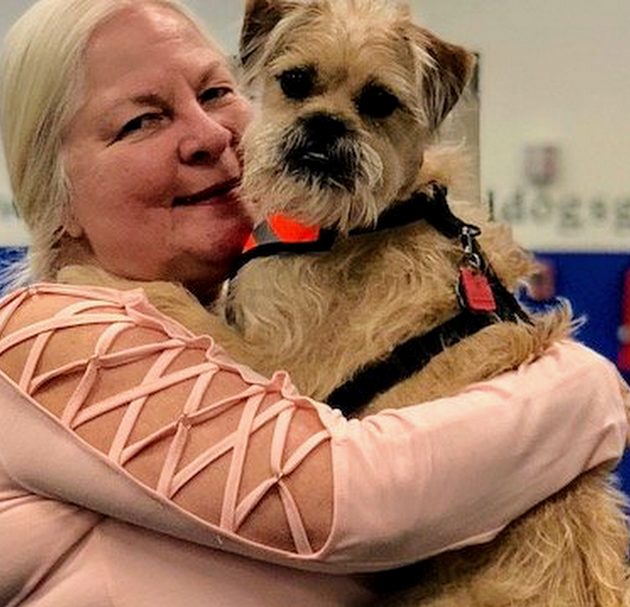
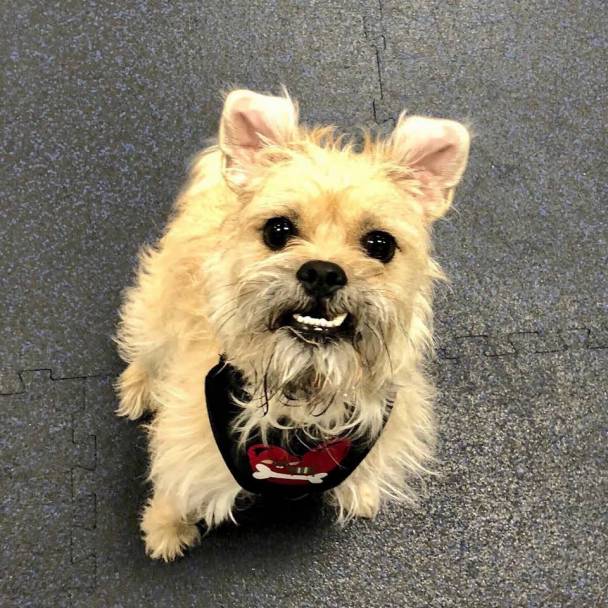
Hypertrophic Osteodystrophy (HOD) or a Blood Infection (Septicemia) 26 May 2022, 6:10 pm
by: Hazel Gregory
My first experience with HOD, ‘Hypertophic Osteodystrophy’ was back in 1962 with a Great Dane litter. The best thing I can say about that long, sad and frustrating ordeal is that the learning experience for myself as well as for my vet (Dr. D. Burke, Ft. Worth, retired), has been undeniably valuable down through the following years. The hopelessness of that situation led me to believe that as a serious dog breeder the need for a better understanding of the nutritional needs, and the chemistry of a dog’s make-up as well as genetics was of utmost impedance. Thus a long and diligent study of animal and human nutritional needs Is to this day a constant searching; a study of both medical and Mother Nature’s facts and theories. I do believe it was this serious study of large, fast growing dogs’ nutritional needs as compared to the commercial dog foods available, over the years, has perhaps saved my Great Danes from a repeat episode of HOD as described in veterinary medical publications. Unfortunately that long (20 year) dry spell was soon to end.
It is my hope that this true story will help dog owners and veterinarians recognize that the symptoms of HOD and what I call Pseudo-HOD, a blood infection, or Septicemia, are quite nearly the same. My proof of this claim is a story that needs to be told.
My story starts back in September of 1984, the weekend of the Dallas/Ft. Worth Kennel Club’s Dog Shows and the Great Dane Specialty. My husband and I lived about a two hour drive due west of Dallas. I had puppies to sell and I had buyers that wanted us to meet on that dog show weekend. Fortunately I had a friend in Dallas that had room at his home for me and my pups. The Dallas Great Dane Club’s Specialty party was to be at his home and I was looking forward to a fun weekend. My friend had told me that his prize female puppy was sick with HOD. His vet, Dr. Chipper Wilkerson, said it was a classic case – but the prescribed treatment didn’t seem to help muCh. I hadn’t seen a case of HOD since the 1960’s We discussed the pain, high fever, diet and the helplessness of coping with HOD. I couldn’t believe HOD was back again. That weekend my friend’s puppy was rushed back to the vet and although they did all they could the puppy died. My friend’s disappointment and sadness was obvious, but like most dog people he knew one bad to learn to hang in there and move on.
That weekend I had sold several of my puppies to good show homes. Four of the puppies had gone home with their new owners; one to Dallas, one to Houston, one to Alaska, and one to Wisconsin. Three puppies came back home with me. One of these, a male, was to be lead and house trained for his new owner.
The following Wednesday, while working with the male puppy, I noticed he didn’t act up to par. I reasoned that he hadn’t quite recovered from the stress of the weekend trip and strange surroundings. Thursday the puppy was not any better but was still eating, had no temperature, but was playing less. Friday morning the puppy was sick-sick – completely down. with a raging fever. I rushed him to the vet where I had to leave him as I was to be gone for the weekend on a judging assignment. The veterinarian, Dr. Aleta Pierce in Stephenville, Texas, had just opened her new clinic. She was young, eager to succeed and had a brilliant, inquisitive mind. I felt confident that the puppy would be fine and that I would get a call on Monday to come and get him. Monday I did get that call. Dr. Pierce said, “it took a high dose of antibiotic by IV to bring the temperature down but he would be fine now.” The pup’s temperature was gone, he was eating, had bright clear eyes, looked and acted fine except he couldn’t walk. His rear just collapsed when lie tried. Dr. Pierce said, “he’ll be OK. In a few days he’ll be stronger and able to walk, He’s had more than enough antibiotics to get whatever caused the problem. Take him home to rest and he’ll get better.”
I did just that. The pup ate well and his eyes were clean he would struggle to stand but fell over when trying to walk. His hind legs just would not work. By Wednesday the puppy’s fever was back again; full force! I took the puppy back to Dr. Pierce and left him there.
The next day Dr. Pierce talked to her professors at Texas A&M Veterinary School; she then called me to come to the clinic because we needed to talk. Dr. Pierce said A&M suspected HOD, her first case. The X-rays she took were inconclusive at the point. Note: X-rays usually are at this early stage. My reaction was Instant. From what I had learned HOD is not contagious. HOD is a nutritional chemical imbalance. I explained to Dr. Pierce about my friend’s HOD puppy and my puppies being at his kennel. My previous experience with HOD and these current events were very different. Could them be a connection or is this Just coincidental? We talked about the calcium-phosphorus blood serum ratio It was normal. I asked her if this could be a spinal infection. Her antibiotics treatment had brought the fever down even if only temporarily. I suggested trying Chloromycetin (*generic name: Chloramphenicol). I had learned years ago that Chloromycetin was the only antibiotic that crossed Mother Nature’s natural barrier that protects the brain, the spinal cord, mammary glands, and bone marrow. Dr. Pierce said that with the rear end being affected it could be a myelitis, at this point the lab tests and the X-rays are inconclusive. If it is myelitis chloromycetin is the drug to use. We’ll have to make periodic -blood tests to watch for a possible blood eclasia, which is unlikely but a necessary precaution when using this drug.” (Since then I have been Informed that a blood eclasia does not occur in dogs. only humans.) If this treatment isn’t successful and it is HOD, more X-rays will prove such as it progresses. Note again, early stages of HOD do not show joint swelling – Fever and joint soreness comes first.
I left the puppy and Dr. Pierce started him on Chloromycetin, the dosage to be 25mg per pound of body weight, three times a day. The puppy stayed in the clinic through the weekend. Dr. Pierce called on Monday and asked that I come in to see what I thought. It was amazing; the puppy was running around the clinic acting and looking like he had never been sick. Dr. Pierce said, “the Chloromycetin did it and (was to keep him on it for ten days to 2 weeks after which he would be fine.” He was, but this puppy was only the beginning of more HOD -troubles to come.
Within the week I received a phone call from the puppy buyer who lived in Houston. Her puppy, “Beau” was from a different litter and was also with me that Dallas weekend; he was approximately two months older than the other puppy. I sold Beau as a top show puppy; his pedigree was excellent. It was a great home for this puppy. I kept his litter sister, my Daria Jane, ten years young, fat and healthy to this day. This new puppy owner said her puppy started acting sick shortly after they got home from Dallas. They had treated him with antibiotics; he improves for a while but then gets sick again. He lies around a good deal and he cries if pressure is applied to his joints; at this point he can hardly walk, and his new owner is very concerned, Her vet, Dr. A. Senske In Houston, Texas, suspects the beginning of HOD but his X-rays are not conclusive yet, he would X-ray again In seven days. I told her about my sick pup and suggested she start her puppy on Chloromycetin, which, she did.
Beau showed signs of feeling better while on the Chloromycetin. He was only on the Chloromycetin two or three days when his 2nd X-rays were taken. The X-rays were sent to a radiology lab to confirm Dr. Senske’s diagnosis, again a classic case of HOD. Dr. Senske said to stop using the Chloromycetin as it can’t help since HOD is a nutritional (mineral) Imbalance. The new owner was very upset as she liked this puppy. Her husband, an orthopedic specialist, told her “as bad as the puppy’s legs are he will never be right.” Dr. Senske’s prognosis was also very discouraging.
I was frantic! By this time I was convinced that we were dealing with an infection that produced the same symptoms as HOD. I wanted the puppy treated with Chloromycetin. I offered to refund the purchase price if she would meet me half way between Houston and Dallas and return the puppy (an eight hour round trip for both of us), she agreed. When we met to make the exchange I was handed a copy of the lab report that had arrived that morning. We were stunned! It did confirm Dr. Senske’s diagnosis of HOD but it also said, “New findings suggest hematogenous (blood) infection as a cause. Do not treat as prescribed for HOD, use antibiotic instead. WOW – I knew I was on the right track!
I brought Beau back home, took him to Dr. Pierce and began the Chloromycetin treatment. It required three series of ten days on and ten days off before we were sure that the infection was defeated. This was the recommended treatment when a chronic situation is suspected. Beau had a serious case. He had been treated with other antibiotics before HOD was suspected which I learned later usually suppresses the infection but will not cure it. Chloromycetin is the drug that works. All Beau’s joints were much more swollen than the first puppy’s and it took a long time before returning to normal.
Periodically during Beau’s recovery Dr. Senske and I discussed this case. He was as surprised as I was regarding the lab report and will confirm the facts of this case as well as other similar cases he has since treated. A copy of this lab report was also sent to Dr. Chipper Wilkerson. He was equally amazed and also supports this form of treatment. This Great Dane Beau grew to his full potential; finished his AKC championship, produced fine puppies and never showed any negative after-affects of his so called HOD. Note: a month later a litter brother to my friend’s bitch that had died came down with so-called HOD. This dog was cured with Chloromycetin also. Two other puppies, litter mates to my puppy, the one in Alaska and the one in Wisconsin, had the same HOD symptoms several months later. When I received their owners frantic telephone calls I sent out copies of the lab report. Both dogs were cured after treatment with Chloromycetin.
Remember all these dogs were exposed to my friend’s bitch that died of HOD.Periodically through the years I have received many telephone calls from people all over the country who heard that Hazel Gregory knows how to cure HOD. All the calls have been word of mouth reference through Great Dane people. Usually their dogs are in terrible condition by the time they call me and their vet is willing to try “whatever it takes.” These vets and owners have all been astounded by the positive results attained when Chloromycetin is administered. Several vets have called me because they were skeptical but agreed to try the Chloromycetin treatment after we talked; I usually sent a copy of the lab report to them. Later on they all but one acknowledged successful results. This vet refused to treat as I suggested. He could not accept what I told him and said he didn’t like to use Chloromycetin. This is a comment I often hear when talking to veterinarians. The puppy’s owner said the vet did prescribe half the required dosage for five days only. That helped a little but wasn’t enough. After the five days the puppy went back down and eventually had to be put to sleep.
More recently I have heard from an Irish Setter breeder. She had two different dogs diagnosed as having HOD. She was told by a friend to call me. Her vet willingly started the treatment as suggested, again with successful results. One of the puppies had a more severe case and had to receive two series of treatments. This Irish Setter breeder showed me her dog at a recent dog show. She said his legs had large knobs and swollen joints before treatment. When I saw him his legs were fine; he was a beautiful dog. This lady, Shirley Murray, and her husband Roy, are well known respected breeders and professional handlers. They, as well as many others, have encouraged me to write this article.
It seems that the-dreaded symptoms of so called HOD are continuing to occur randomly on not only Great Danes but on different giant, large and medium size breeds. More often than not those afflicted dogs’ prognosis leads to a painful, hopeless heartbreaking end.The reason I call this terrible disease Pseudo-HOD is because as I see it, the symptoms are the same as real HOD but the cause and treatment are totally different. At the end of this article is a copy of the lab report I have previously referred to from the Houston Veterinary Radiology Clinic dated 10-22-84. signed by Dr. C. B. Quick, DVM, M.S. I think this report proves I am correct regarding antibiotic treatment with reference to a blood infection. Also see Ref. 3. Notice the antibiotics list does not emphasize that Chloramphenicol (generic name for Chloromycetin) is the drug of choice. But remember the Mother Nature (blood-brain barrier) barrier -Chloramphenicol is the only one listed that gets to the core of the infection – the bone marrow where blood is made. As I see it, the preliminary use and periodically changing of different antibiotics creates a see saw effect and possible chronic condition. Then as the infection hangs on the joints become inflamed and calcium deposits start to build up on the outer extremities of the long bone just above the joints. When this happens, the pup is well into the disease, perhaps 1-2 weeks. X-rays are then taken and HOD is diagnosed. HOD, medically speaking, is listed under the heading of “Disease of Undetermined Etiology” (see Ref. #7) which basically says they don’t know the cause or cure of HOD.
Veterinarians are advised that treatment should be directed toward controlling fever and reducing pain using analgesics and/or corticosteroids. Prognosis is grim. Antibiotics are used only to control possible secondary infections such as tonsillitis, etc. With Dr. A. Senske’s help I have obtained several pertinent veterinary medical documents on HOD research and findings. These are dated back to the early 70’s, 80’s, and into the 90’s. Actually very little scientific help is available that shows consistent facts and findings that work or help. They all basically have the same conclusion. Medical science does not have any scientific proof as to the cause or treatment of HOD (see Ref. 47). All these documents are listed in the References.
Over the years whenever I received a phone call asking about HOD I have always suggested the same treatment and diet. It always works – I only ask for a follow up progress report. So far I’ve had 99% success. The treatment I recommend is:
1. Always work with your veterinarian (* Do not give Vitamin C supplements while on antibiotics.)
2. Start immediately on Chloramphenicol 25mg per one pound body weight 3 times a day for 10 days – 2 weeks. Example: a 40 lb. pup gets 1 gram 3x day – do not underdose.
3. For fever and Inflammation use only as needed Ascriptin and/or Phenylbutazone.
o Try not to use any cortisone shots or pills.
o Give plenty of rest in crate or x-pen with soft bedding and water always available.
o Do not force exercise – only free choice.
DIET
1. Mix and feed twice a day – AM and PM – same time always continue with your regular good quality dog food – protein should range 20-25%, fat should range 8-10%. Add small amount of tasties (chicken is good).
2. Important – add to each feeding 2-3 Tbs. tonic formula (below)
TONIC FORMULA
To mix tonic formula use equal amounts each of pure Apple Cider Vinegar and Honey = 1 quart. Example: 1 pint Apple Cider Vinegar + 1 pint Honey.
NOTE: slightly warm honey (not hot) mixes easier with warm vinegar – store at room temperature.
• do not free feed dry dog food
• do not force feed
• do not feed fancy high powered – high fat – high protein -low roughage (stress type) dog food.
Although it has its purpose a simple basic healthy diet is always best. Stay with this kind of diet plus the tonic which is an old time recipe used for years as an arthritis remedy (see Ref #8). Remember the old saying, “an apple a day keeps the doctor away.” IT WORKS! This over all general tonic is the best formula I’ve found in raising fast growing large bone dogs. The Apple Cider Vinegar helps keep the calcium intake in a soluble state so it can be more easily absorbed into the system. It also helps dissolve and flush out acid crystals that build up in the muscles and joints.
A must read for dog breeders Is Dr. D. G. Garvis’s book on Vermont Folk Medicine. This book was my start in learning how to appreciate the many benefits of natural foods and healing. Up `til then my studies were more concentrated on vitamin and mineral requirements and supplements. I can’t Imagine raising Great Danes without the help of Apple Cider Vinegar and Honey Tonic. All our dogs – youngsters, oldsters and in betweens – even my husband and myself have a daily shot with a glass of ice wafer. It tastes like Apple Cider – GOOD!!
Good Luck and God Bless. HAZEL GREGORY, 414 Richland, Lewisville, Texas 75057, (214)434-1134.
PS: In the foreseeable future this subject will be addressed with more in depth considerations regarding unanswered questions. Much is yet to be learned and explored regarding HOD. In the meantime I hope this article will be of some help to our dogs and their owners. Any questions or inquiries regarding this article are most welcome. Copies of the documents listed are free with $4.00 each for postage and handling. The book, Vermont Folk Medicine by D. C. Jarvis, MD, is $6.00 plus $4.00 postage and handling. Thanks again.
REFERENCES
Watson ADJ, Blair 8. 0., Farrow BRH, at al: Hypertrophic Osteodystrophy in the dog. Aust. Vet 4 49 (9): 433439,1973.
Crondalen 4: Metaphyseal Osteopathy (Hypertophic Osteodystrophy) in growing dogs: A Clinical Study. 4 Small Animal Practice 17(11): 721435, 1976.
Watson ADJ; Hypertophic Osteodystrophy: Vitamin C deficiency, overnutrition, or infection. Aust. Vet Pract 8(2): 107-108,1978.
Woodard 4: Canine Hypedrophic Osteodystrophy, a study of the spontaneous disease in littermates. Vet Pathol 19(4): 337-354.1982.
Alexander JW, Roberts RE: Symposium on orthopedic diseases. Vet Clinic North Am [Small Animal Practice] 13 (1): Feb. 1983.
Lewis PD, McCarthy RJ. Pechman RD,: Diagnosis of Common Development Orthopedic Conditions in Canine Pediatric Patients, The Compendium. Small Animal Vol 14, #3, pg 287-297, March 1992.
Textbook of Veterinarian Internal Medicine Vol 2 – 3rd Edition. Sec. XV Joint & Skeletal Disorders, Chapter 121, Skeletal Diseases, pg 2391, by Stephen 4. Ettinger D.V.M.
Vermont Folk Medicine by D. C. Jarvis, MD. publ. Fawcett Crest, NY.
Dog Vocabulary 6 Aug 2021, 1:17 pm
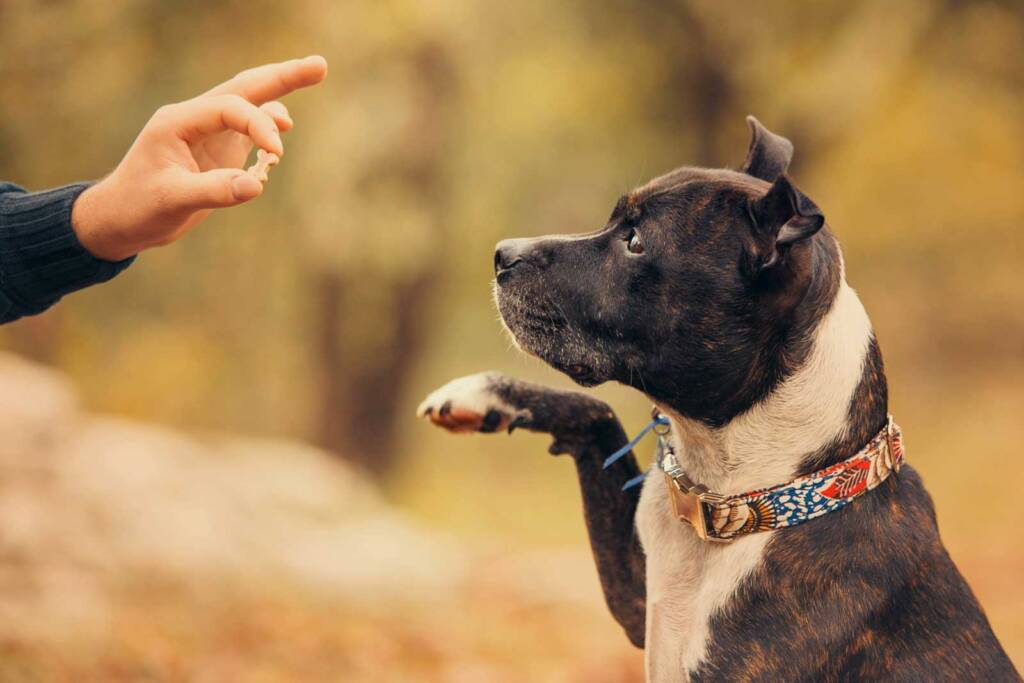
A) Abandoned, Ability, Activity, Adoption, Affect, Affection, Affectionate, Aggressive, Agility, AKC (American Kennel Club), Allergy, Alpha, Approach, Assistance, Attack, Average, Awareness
B) Balance, Bay, Behavior, Biscuit, Blissful, Bluff, Bone, Brand, Breed, Breeder
C) Calm claw, Canine, Care, Castration, Caution, Cautious, Characteristics, Checkup, Chewing, Chow, Claws, Clipping, Coat, Coloring, Command, Communication, Companionship, Compassion, Competition, Confinement, Connection, Consume, Continuing care, Control, Cropping, Crossbred, Croup, Cruelty
Curabitur varius eros et lacus rutrum consequat. Mauris sollicitudin enim condimentum, luctus justo non, molestie nisl.
D) Dam, Dangerous, Defense, Dependable, Destructive, Detection, Devotion, Dewclaw, Diet, Disciplined, Disease, Distemper, Docile, Dock, Dog lover, Dominant, Down
E) Effective, Endurance, Energetic, Entertainment, Environment, Euthanasia, Exasperating, Exercise, Expense, Experience, Exuberance
F) Fang, Feature, Fetch, Fidelity, Fido, Finicky, Fitness, Fleas, Food, Foreleg, Formula, Four-legged friend, Friendly, Fur
G) Games, Gentle, Gnaw, Greeting, Grooming, Grow, Guard, Guardian, Guide dog
H) Handling, Harness, Haul, Heal, Healthy, Heart, Heart worm, Heel, Herd, Hide, Hind quarters, Hock, Homeless, Hound, Housebreaking, Howl, Humane, Hurt
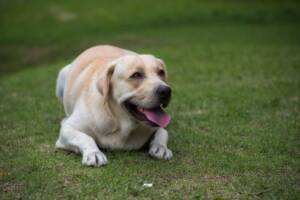


I) Incentive, Infection, Inflammation, Inherited, Inhumane, Injury, Insecure, Instinct, Intelligence, Intrude, Intuition, Irrepressible, Irritation
J) Jerk, Jog, Joint, Judge
K) Kennel, Kindness
L) Learning, Leash, Leftovers, Licensing, Life-span, Litter, Love, Loving, Loyalty, Lunge
M) Malady, Marking, Mate, Maturity, Mayhem, Menace, Mimicking, Miniature, Misbehavior, Mistreat, Mixed breed, Mongrel, Muscular, Mutt, Muzzle
N) Nature, Neuter, Normal, Nutrient, Nutrition
O) Obedient, Odor, Outdoors, Outrageous, Overdo
P) Pack animal, Pad, Panting, Parasite, Pastern, Patient, Paw, Pawing, Pedigree, People-person, Personality, Pet, Pet-friendly, Placid, Playful, Plunder, Pooch, Popularity, Pounds, Practice, Praise, Prevention, Proportion, Puppy, Puppy-hood, Purebred
Q) Quick, Quiet
R) Rabid, Rabies, Range, Rawhide, Registration, Regulation, Relationship, Relief, Rescue, Respect, Response, Responsibility, Retrieve, Reward, Roaming, Rock-solid, Rump
S) Safety, Scent, Sedate, Senses, Sensitivity, Service, Shelter, Shiny, Shots, Signal, Sire, Sit, Size, Snarl, Socialize, Spay, SPCA, Special, Specialty, Split-personality, Sporting dog, Standard, Stare, Starvation, Stay, Stereotype, Stray, Stroking, Structure, Submissive, Sweet, Sweet-nature, Swift
T) Temperament, Tendency, Terrier, Territorial, Threaten, Tick, Toleration, Toys, Training, Treatment, Treats, Trouble, Type
U) Unconditional, Undercoat, Understanding, Unique, Unsanitary, Unusual, Unwanted
V) Vaccination, Variety, Veterinarian, Vicious, Vigor, Voice
W) Wag, Walking, Wary, Washing, Water, Weight, Welcome, Welfare, Whelp, Whining, Whiskers, Wise, Working dog, Worthy
X)
Y) Yank, Yard, Yelp
Z) Zeal